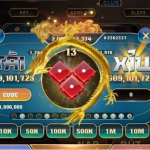When engaging in international trade, understanding export payment terms is essential for ensuring smooth transactions, protecting both the exporter and the importer, and minimizing the risk of non-payment.
Indian exporters, in particular, often navigate a variety of payment methods such as Letters of Credit (LC), Documents Against Payment (DP), and Documents Against Acceptance (DA), each with its own advantages and challenges.
In this blog, we’ll break down these common export payment terms and explain how they work, helping Indian exporters choose the best option for their business needs.
What Are Export Payment Terms?
Export payment terms refer to the agreements made between an exporter and an importer about how and when payment for goods or services will be made. These terms are critical in international trade as they help set expectations for both parties and minimize potential risks, particularly when shipping goods across borders.
The payment methods typically fall under one of three categories:
- Advance Payment: The importer pays before the goods are shipped.
- Open Account: The exporter ships goods and sends an invoice, allowing the importer to pay within a specified period after delivery.
- Documentary Payment Terms: Payment is made upon submission of documents related to the shipment.
Among these, LC, DP, and DA are the most commonly used documentary payment terms in international trade.
What is a Letter of Credit (LC)?
A Letter of Credit (LC) is a written commitment from a bank, usually on behalf of the importer, to guarantee payment to the exporter. It ensures that the exporter will receive payment once they meet the agreed-upon terms and provide the required documents, such as shipping receipts and invoices.
Key Features:
- Bank Guarantee: The bank guarantees payment to the exporter once the conditions of the LC are met.
- Security for Exporter: The exporter’s payment is guaranteed, reducing the risk of non-payment.
- Document-Driven: Payment is made once the exporter submits the required documents to the bank.
Advantages for Exporters:
- Payment is secured by the bank, making it a low-risk option.
- Particularly useful when dealing with new or untrusted buyers.
- Provides an assurance of payment, which is important for large or high-value transactions.
What is Documents Against Payment (DP)?
Documents Against Payment (DP) is a payment method where the exporter ships the goods and submits the required documents to the bank. The importer can only access these documents upon making full payment. This method gives the exporter more control over the goods until payment is received.
Key Features:
- Payment on Presentation: The importer must pay before receiving the documents necessary to claim the goods.
- Simple Process: This method does not require the involvement of a bank in the credit process.
- Relatively Low Risk: The exporter has control of the goods until payment is made, reducing the risk of non-payment.
Advantages for Exporters:
- Easier and less costly than LCs as it involves fewer bank procedures.
- The exporter has more control over the shipment and the payment process.
- Best suited for trusted buyers with whom the exporter has an established relationship.
What is Documents Against Acceptance (DA)?
Documents Against Acceptance (DA) is a payment term where the exporter ships the goods and submits the necessary documents to the bank. The importer can receive the documents and take possession of the goods after accepting a draft to make payment at a later date, typically within a set time period.
Key Features:
- Payment Due After Acceptance: The importer takes possession of the goods after agreeing to pay by a certain date.
- Delayed Payment: The payment is made by the importer at the time of accepting the documents, rather than immediately upon presentation.
- Less Secure than LC: While the goods are shipped, the exporter does not receive immediate payment, which can carry some risk.
Advantages for Exporters:
- Allows buyers more flexibility, which may be appealing to repeat customers.
- Facilitates smoother trade relationships with trusted clients.
- Lower fees and paperwork compared to LCs.
Which Works Best for Indian Exporters?
Choosing the best payment term for your business depends on the nature of your transactions, the relationship you have with your buyers, and the level of risk you’re willing to take. Here’s a quick guide to help Indian exporters determine which method works best for them:
When to Choose Letter of Credit (LC):
- New Markets or Untrusted Buyers: If you’re dealing with a new or untested market, an LC provides a high level of security and assurance that you will get paid.
- High-Value Transactions: When dealing with large orders, LCs minimize the risk and ensure that payment will be made once the terms are met.
- Political or Financial Instability: In countries where financial or political instability is an issue, LCs are a safer way to ensure that payment will be made.
When to Choose Documents Against Payment (DP):
- Established Relationships: If you have a strong relationship with the buyer and trust them to make payment on time, DP is a more cost-effective and simpler option.
- Regular Transactions: When working with repeat customers, DP can help speed up the payment process without requiring extensive bank involvement.
- Lower Risk Transactions: If the financial stability of your buyer is not a concern, DP provides a more straightforward method for payments.
When to Choose Documents Against Acceptance (DA):
- Flexible Payment Terms for Trusted Buyers: If you have an established relationship with the buyer and they need flexibility in payment, DA can help foster stronger business ties.
- Frequent or Recurring Orders: For businesses that make regular shipments to the same customer, DA can create a more predictable payment schedule.
- Lower-Risk Markets: If you’re dealing with a buyer in a market where you feel confident in their ability to make payment, DA provides more flexibility than DP or LC.
Conclusion
Managing export payment terms effectively is crucial for the success of Indian exporters in international markets. Understanding the differences between LC, DP, and DA, and assessing the risks and benefits of each method, is essential to reducing financial risk, improving cash flow, and maintaining strong trade relationships.
For exporters looking for flexibility, security, and streamlined payment processing, PayGlocal provides a robust platform that supports secure international payments with low fees and excellent currency exchange rates.
Whether you’re shipping goods or receiving payments from clients, having the right payment terms in place can help protect your business and simplify the process of handling cross-border transactions.







